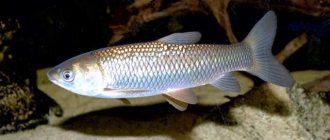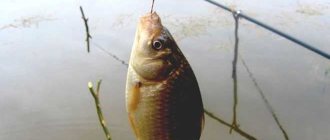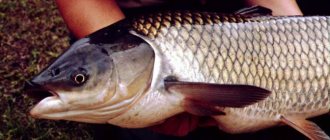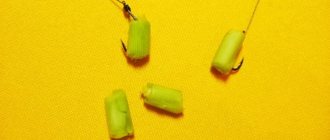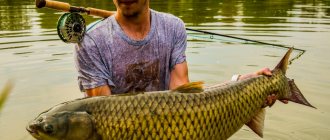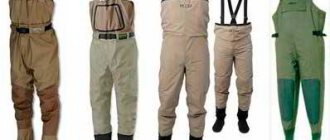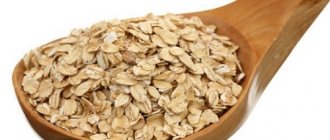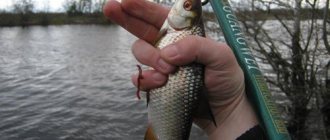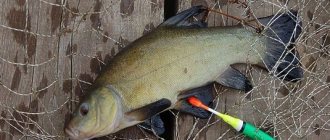With the onset of warmth, all peaceful fish become more and more active. And grass carp, which is also called grass carp because of its excessive predilection for aquatic vegetation, is no exception to the rule. Catching carp in the spring is a fascinating activity and does not require any special skills or equipment from the amateur fisherman. It can be fished perfectly with the usual carp gear. The main thing is to study the habits and accurately calculate the parking places of this strong and large fish. In addition, grass carp is not a rare fish species and, as a result, its catch is practically not limited by law.
Spring carp fishing in March, April and May
Cupid can reach truly heroic sizes. Often, fishermen’s catches include specimens about a meter long and weighing up to fifteen kilograms. And the luckiest ones have the chance to compete with giants weighing over thirty kilograms and more than a meter in length.
Basically, grass carp lives in artificial ponds, where it is placed not so much for the purpose of breeding, but rather to prevent the pond from becoming overgrown with vegetation. Among the rivers where you can meet cupid, I would like to note the following:
- Amur;
- Volga;
- Don;
- Yenisei;
- Ussuri;
- Khanki;
- Seversky Donets;
- rivers of the European plain.
Due to its heat-loving nature, grass carp prefers to actively reproduce only in reservoirs in the southern regions of the country, since it categorically does not want to prolong its genus in a cold environment. The only exceptions may be places heated by the discharge of warm water from nuclear power plants, thermal power plants or state district power plants.
Grass carp spawning begins in mid-May and can last until the end of June. The main requirement is to warm the water to 26-28 degrees Celsius in ponds and up to 19 degrees in rivers with medium and fast currents.
March
In March, the carp bite is practically absent. Only in the southern parts of the country can he take bait, but this is a rare phenomenon and catching carp in this month can be equated to a real miracle, since the fish has not yet recovered from the winter stupor. Biting calendar for March.
April
In April, especially in sunny weather, Cupid is able to become a little more active, but still its main state is sleepy and passive pastime in some hole. Biting calendar for April.
May
May is one of the best months for catching grass carp. The fish, hungry during the winter, readily grabs any bait. The higher the water temperature rises, the more active the carp becomes. Biting calendar for May.
Tips for catching grass carp in spring:
- The best time for fishing is midday on the hottest day.
- In the rain, cupid prefers to stay in thickets of reeds. There is a great chance to catch it in the evening and at night.
- The bait must be placed so that the hook point sticks out. This will not prevent the carp from swallowing the bait, and the hooking will become much more reliable and accurate.
Catching grass carp on the river
Grass carp is a vegetarian fish, since its main source of food is aquatic vegetation. This means it will be useless to look for it on a completely bare and lifeless rocky or sandy bottom. Its feeding grounds are areas overgrown with reeds, sedges, and cattails.
First of all, you need to look for carp on the river in the following places:
- next to thickets of vegetation at a depth of up to two meters;
- nearby with sunken bushes, driftwood, trees that have fallen into the water;
- in places with any underwater obstacles - slides of stones, snags, depressions at the bottom, and the like.
Where to catch grass carp
Basically, you have to catch carp in small artificially stocked ponds, so you don’t have to worry too much about choosing a place. Here it is important to feed the place that you like. But still, if the reservoir is not so small or the carp does not want to hook in the place you have chosen, you need to know which places the grass carp prefers.
The depth for catching grass carp should be no more than 4 meters, from 1 to 3 meters is ideal. This fish loves places where it will feel safe and not deny itself food. Usually these are lush thickets of aquatic vegetation, possibly some flooded trees and other obstacles that are unpleasant for the fisherman.
Of course, if a cupid has settled down in such a place, then it is reliably protected by vegetation, provided with food, and there is simply no point in leaving this ambush. Therefore, it is in such places that it is most likely to catch a trophy specimen. But doing this under such conditions will not be easy. Well, that’s why we are fishermen, we don’t look for easy ways, as they say. All in our hands. You can look for a clean spot where you can throw bait or make it yourself by clearing a small area of algae.
Catching carp on a pond or lake
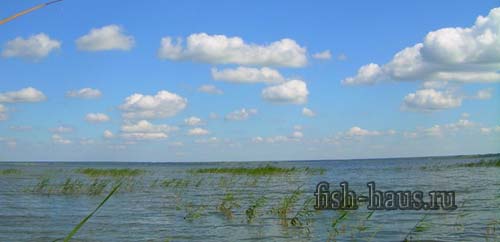
Lakes, ponds and other bodies of standing water are the main habitats of grass carp. Finding it here is much easier than in the river. First of all, you can determine the location of grass carp visually - it often swims in the upper layers of water and is perfectly visible from any elevation. In addition, the presence of cupid can be indicated by noisy splashes and triangular fins protruding above the surface of the water. If you cannot visually find the carp, then you should resort to a proven method - throw the tackle near thickets of reeds or cattails. At the same time, you should not be afraid of shallow water - quite respectable individuals can bite at depths of about fifty centimeters.
Tackle for spring fishing for grass carp
On the fishing rod
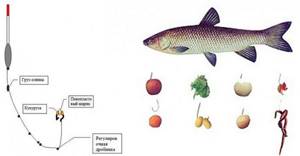
A float rod is an ideal tackle for catching grass carp. After all, this fish rarely takes bait from the bottom, preferring to peck on a floating bait, and tackle with a float alarm is perfect for this. The main thing is to choose the right rod. It must be highly durable, since there is a high probability of catching a trophy specimen weighing over 10 kilograms. The fishing line is no thinner than 0.3 mm, hooks are No. 10-12. For catching carp, both a classic float rod from four meters long and a plug or a high-quality match rod used when hunting carp are suitable. Read also: Which float to choose
On the donk (feeder)
In the spring, while the shores of reservoirs are not yet covered with abundant thickets of reeds or cattails, fishing with bottom tackle - spinning rods or a feeder - can be productive. To prevent the bait from lying on the bottom, it is recommended to lift it using foam balls, which are attached to the leash with the bait. True, it is better not to use fresh polystyrene foam, as it has a fish-repellent odor. When fishing with bottom tackle, you need to use bait to attract fish to the fishing spot. One of the main advantages of bottom tackle is that you can fish with it at any time of the day - both in the light of day and in the dark of night. This is interesting:
Catching carp on reeds
One of the most common methods of catching grass carp is fishing with reeds. It is good because it does not require special preparations or expenses for bait. Reed leaves can always be picked directly while fishing. The simplest equipment is a float or bottom tackle with pieces of reeds attached to a hook. However, for greater effect, it is better to use hair equipment made independently or purchased in advance from a fishing store. Pieces of reeds, folded into a tower, are pierced with an awl and placed on the hair. To give the bait more buoyancy, it is recommended to place a small foam ball up to two centimeters in diameter on the hair in front of the reeds.
Catching grass carp using reed pulp
This is now the best delicacy of grass carp. Pay attention to the reeds in your pond; if they are torn off, then this is the work of cupid. This is his daily food.
#equipment #how to rig #fishing features
When to catch grass carp
Cupid is caught from May to October. And just at the very beginning and end of the bite, that is, in May and October, the probability of catching cupid increases. This is because in May, the beginning of spring, the main food of the carp, aquatic vegetation, has not yet had time to bloom, but in October, on the contrary, it has already withered. During these months, the food supply of the carp is poor and it is easier to attract it with bait than during periods of abundant algae growth.
In summer you can also observe the Amur musk deer. In general, the activity of cupid increases with increasing water temperature, because cupid loves hot weather and hot water. But the catch is that in summer the vegetation is at its height and there is enough food for him. You have to spend more time and effort searching for places where the cupid has settled and bait that it will like more than the vegetation in the reservoir. It’s another matter if the carp doesn’t have enough of this vegetation on the reservoir. Then catching grass carp becomes much easier. All that remains is to choose the bait that will suit his taste.
Bait and baits for carp in spring
In spring, carp are caught mainly using bait of plant origin. Grass carp gives particular preference to the following baits:
- canned corn, which he pecks at at any time of the year;
- various porridges - pearl barley, wheat, peas;
- young cabbage leaves;
- fresh cucumber, cut into pieces;
- green beans and peas;
- leaves and stems of reeds or cattails;
- cube of makukha.

In some reservoirs, cupid also takes good bait on animal baits. Its favorite food is bunches of bloodworms, worms and maggots. At the same time, they are used both individually and in the form of various “sandwiches” with corn or reeds.
Baits and bait for grass carp
Previously, grass carp were caught using rather unusual plant baits, and there are still legends about the catchability of some of them.
Such baits include cabbage leaves, pea pods, reeds, aloe and other greens.
However, with the increase in the scale of grass carp breeding and the growing popularity of targeted fishing, this fish began to peck on familiar baits:
- Corn;
- Peas;
- Wheat;
- Bloodworm;
- Boilies.
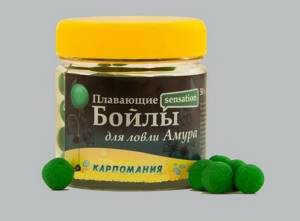
As for bait, its composition is also not very different from carp or feeder bait.
You can get acquainted with bait recipes in our review by following the link.
Grass carp loves corn, so this ingredient should definitely be added to any mixture.
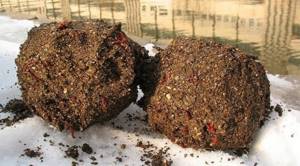
You can also use boiled peas, flakes, cake, fried seeds. It is well known that grass carp is an insatiable fish, especially in the spring, so a lot of bait will be required. However, it is best to first try to lure the “grass carp” without it. If this approach does not give the desired result, then it is worth turning to the use of a bait mixture.
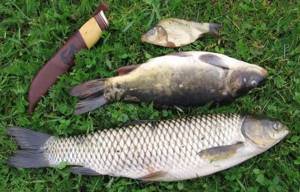
Author of the article: Vitaly Leonidovich Ivanov, 2021.
Bait when fishing for carp
Catching grass carp without using bait is only possible thanks to luck. It is impossible to overfeed this large and very voracious fish, which means you will have to take a large supply of bait for fishing. After all, if cupid eats everything that you have prepared for him and does not find new food, he will simply go to another place. The easiest way to feed grass carp is to pour 1.5-2 kg of steamed, boiled or canned corn into the fishing area. Also, in addition to purchased bait, you can use:
- millet;
- barley;
- crushed peas;
- cakes;
- halva;
- bran.
In addition, the bait should have a good dust base, thanks to which a column of fragrant turbidity will rise to the surface.
No tail, no scales, dear fishing friends! Share your catches, cool places, baits and fishing methods in the comments!
Techniques for catching carp in summer
To lure the fish, you need to throw the bait in a clean place near the algae . If the area is too overgrown, it should first be cleared of vegetation to make it more convenient to use the gear. After the fish is hooked, it begins to twitch and tries to move further into the grass. The fisherman needs to prevent this maneuver and hold it. At this time, you cannot throw the fishing rod up and pull it towards you - this is one of the main mistakes. It is necessary to move the fishing rod left and right to tire the fish. If the fisherman feels that it is going to the left, then he must pull it to the right and vice versa.
Did you know? Grass carp can consume as much vegetation per day as it weighs.
You also need to lift it slightly. After such a “struggle”, Cupid will lose orientation, get tired and will not be able to resist. You should have a net with a long handle with you. It must be lowered into the water before casting.
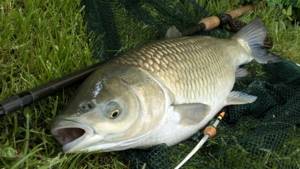
So, catching such a valuable representative of the underwater world as grass carp is quite difficult, since it is very shy and seriously resists when hooked. However, if you choose the right time, quiet place, bait and gear, you can succeed and catch a 25-30 kg beauty.
